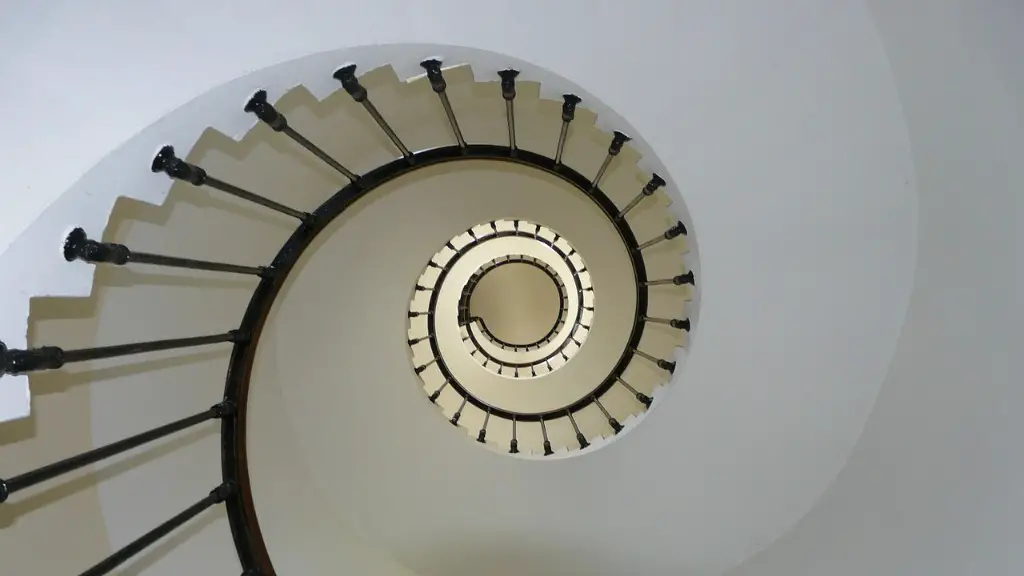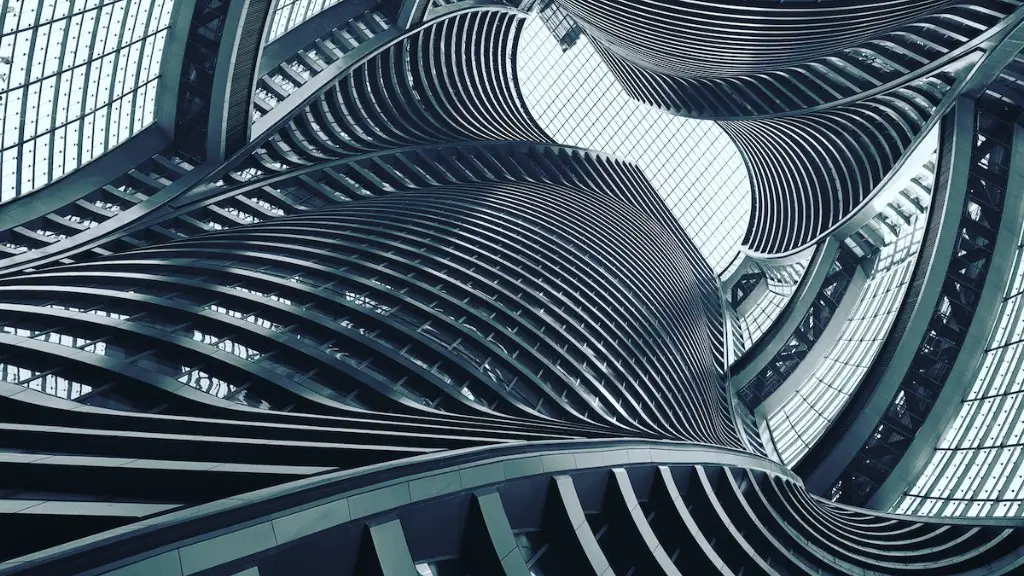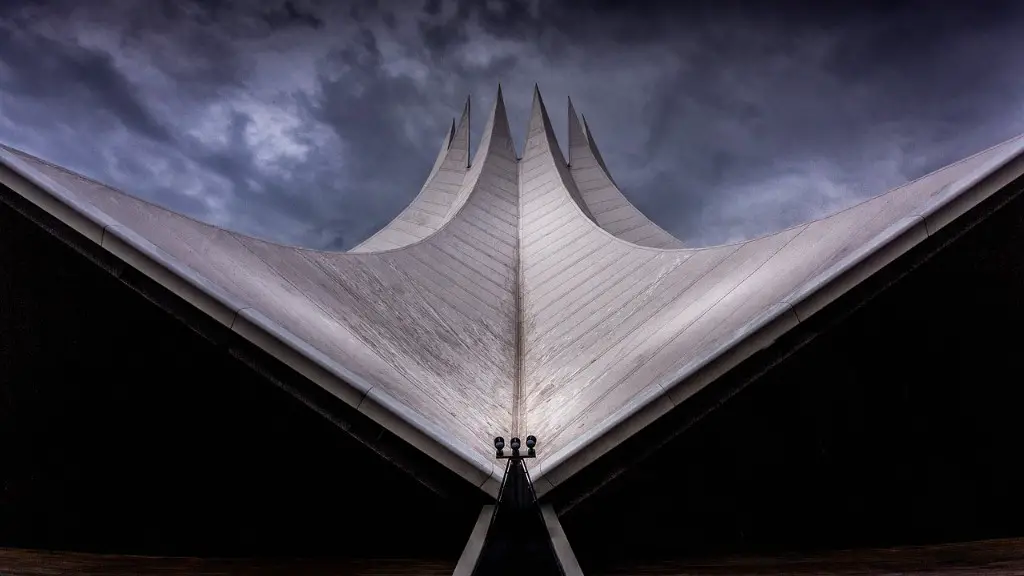Who Is The Father Of Modern Architecture?
The father of modern architecture is a title often attributed to the Swiss-French architect, Le Corbusier. He was a multi-faceted and versatile genius who not only revolutionized the field of architecture but also shaped the aesthetics of urban planning and design. Born in 1887, Le Corbusier was a student of the École Polytechnique of Lausanne and quickly developed an architectural philosophy focused on functional design, modular construction, and volume. He was also an avid proponent of the use of abstract elements in his designs, including the use of concrete, steel and brick. He was one of the first architects to employ the principles of modernism, which soon became a dominant force in the 20th century world of design.
Le Corbusier’s imprint on the world of architecture was far reaching. His seminal works, such as the development of The Radiant City in 1929, outlined his vision for a utopian urban plan. The plan was an efficient, functional, and aesthetically pleasing means of designing an urban landscape. The Radiant City sought to address the issues of overcrowding and unsanitary living conditions found in many of the world’s major cities at the time.
Le Corbusier’s influence did not end with the Radiant City plan. He also innovated various design elements that revolutionized the field of modern architecture. His use of the Modulor system was among the most influential elements of his work. It was based on mathematical principles that unified measurements and focused on the use of an idealized human figure as the central figure in architecture. The Modulor system allowed architects to easily and accurately calculate the dimensions of a structure, revolutionizing the field.
Le Corbusier’s contributions to architecture also extended to the realm of urban design. His Notre-Dame-du-Haut chapel, built in 1954 in Ronchamp, France emphasized the importance of light and color in design, a concept he previously explored in his own home on the French Riviera, La Maison Citroen. This structure was also a benchmark example of how an architectural space could be used as a focal point for spiritual contemplation.
Le Corbusier’s accomplishments in the 20th century perfected the principles of modern architecture and urban design. His works still form the bedrock of the way in which architects approach design today. It is no surprise, then, that he is regarded as the father of modern architecture.
His Philosophy
Le Corbusier’s philosophy of modern architecture was heavily informed by his training as an artist and by a distinction between form and function. He stressed the importance of functionality and also argued that forms should flow naturally from the structure rather than being imposed on it. He believed that architectural form should be a direct expression of function and advocated for an efficient use of space with an emphasis on modular, yet flexible, construction.
His pioneering concepts of “tectonic” and “service-oriented” architecture lent an artistry to his works and he applied them to many of his projects in Europe and the Americas. Additionally, Le Corbusier formulated and discussed the concept of the “Five Points of Architecture,” which outlined how he believed modern architecture should be created. These five points were the notions of open plan, pilotis, roof gardens, the free facade, and skeleton construction.
Le Corbusier’s oeuvre demands appreciation, not only for its creativity, but for its far-reaching implications on architecture and urban design. His works spanned more than 50 major projects throughout Europe, North America, and South America, and his ideas and innovations re-shaped architecture in the 20th century.
His Criticisms
Critics have noted that Le Corbusier’s works in the early part of the 20th century ignored the needs of the less privileged and contributed to the displacement of an entire class of citizens. His visions for the future of design, specifically his idea for a unified and efficient cityscape, often prioritized the needs of the upper classes and disregarded those of the lower classes. This led to many of his urban plans being manipulated to their detriment, as the less privileged were essentially relegated to becoming second-class citizens in their own cities.
However, Le Corbusier also recognized the need to create better living conditions for the lower classes. His 1957 manifesto, “Towards a New Architecture,” addressed the importance of creating humanely livable spaces for all socioeconomic classes. In this manifesto, he proposed a new type of architecture steeped in social justice and the principles of modernism.
Le Corbusier’s critics also noted that his works often neglected certain aspects of the environment. He had a tendency to disregard certain physical and cultural factors, such as topography, when designing a city, and this often led to his designs being criticized by environmentalists. Furthermore, he was a strong proponent of the use of modern materials, such as concrete and steel, which have led to the degradation of certain sites due to their harshness.
His Legacy
Le Corbusier’s legacy continues to inspire architects and urban planners to this day. His ideas about the use of space and light, as well as his emphasis on function in design, are still relevant in the 21st century world of architecture. Moreover, his use of modern materials, such as concrete and steel, remains a viable means of achieving structural integrity, and his presence is still felt in the field.
Le Corbusier’s works also influence many aspects of design in contemporary cities. Many of today’s urban designs incorporate his Modulor system, which allows architects to accurately measure distances and angles. Similarly, his use of abstract principles to guide the creation of an urban plan influences many of today’s modern cities. Additionally, his notions of form, function, and environment have been especially influential in the development of sustainable architecture.
Le Corbusier’s accomplishments in the world of architecture are unparalleled and his contributions to the field have had an immense and lasting effect. He continues to serve as an inspiration to modern architects and city planners, and his name will continue to be associated with the father of modern architecture.
His Role In The Arts
Le Corbusier’s influence extended beyond architecture and into the wider scope of the arts. His modernist aesthetic was incorporated into various fields associated with design, including furniture and interior design. He sought to create a distinction between the productive and the fine arts, crafting the concept of machine-made art. He transformed ordinary industrial furniture into pieces of art, creating timelessly modern masterpieces that have stood the test of time.
Le Corbusier further experimented with media and art forms to create his works. He was an avid photographer, painter, and sculptor and incorporated elements from these different art forms into his architectural work. For example, his photographs helped to capture the essence of modern architecture and its forms, while his paintings and sculptures blended organic shapes and geometric elements.
Le Corbusier’s works also cross the boundaries between art and architecture. His artistic sensibilities were expressed within his architectures, blending the imagined with the constructed. This combination of art and architecture demonstrated how the two could effectively coexist, inspiring many of today’s architects.
In the end, Le Corbusier had an immense effect on the artistic world. His multi-faceted approach to design, implementing both artistic and architectural principles, is what sets him apart from other architects of the 20th century. His timeless designs are still appreciated and appreciated by many today, emphasizing his role as a pioneering visionary.
His Lasting Impact
Le Corbusier’s lasting impact on architecture can be felt in the many buildings, projects, and designs produced in the wake of his work. He challenged the conventions of design and offered a revolutionary approach to structuring a city or building. His urban plans, designs, and structures have left an indelible mark on the world of architecture and design and continue to be studied and admired today.
Le Corbusier’s influence extended beyond the architectural world and manifested in the wider culture as well. His concepts of modernism, as well as his modernist aesthetic, continue to influence artists and designers today. By challenging the traditional conventions of design and using abstract principles to create beauty, Le Corbusier opened up a new world of possibilities for the arts and design.
Le Corbusier’s visionary contributions set him apart and earned him the title of the father of modern architecture. His legacy will persist in the field of architecture, as well as in the bigger realm of arts, design, and culture. His legacy will forever remain as a treasure, reminding generations of his impact on the world of design and architecture.





